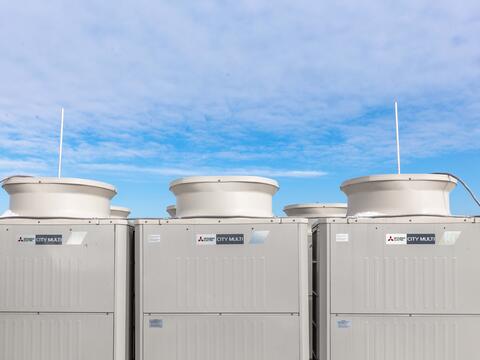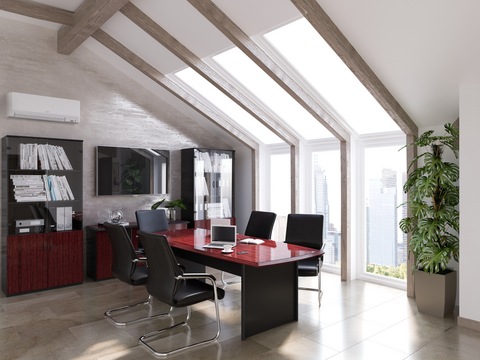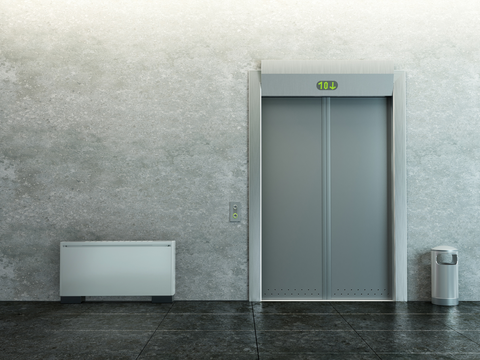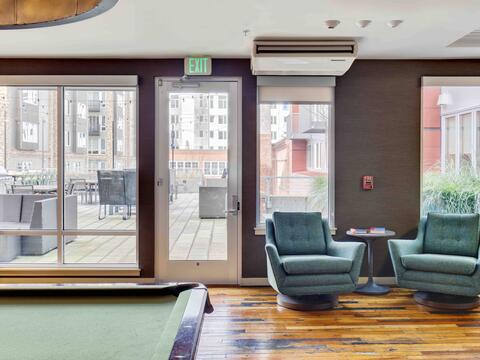¿Qué es una bomba de calor?
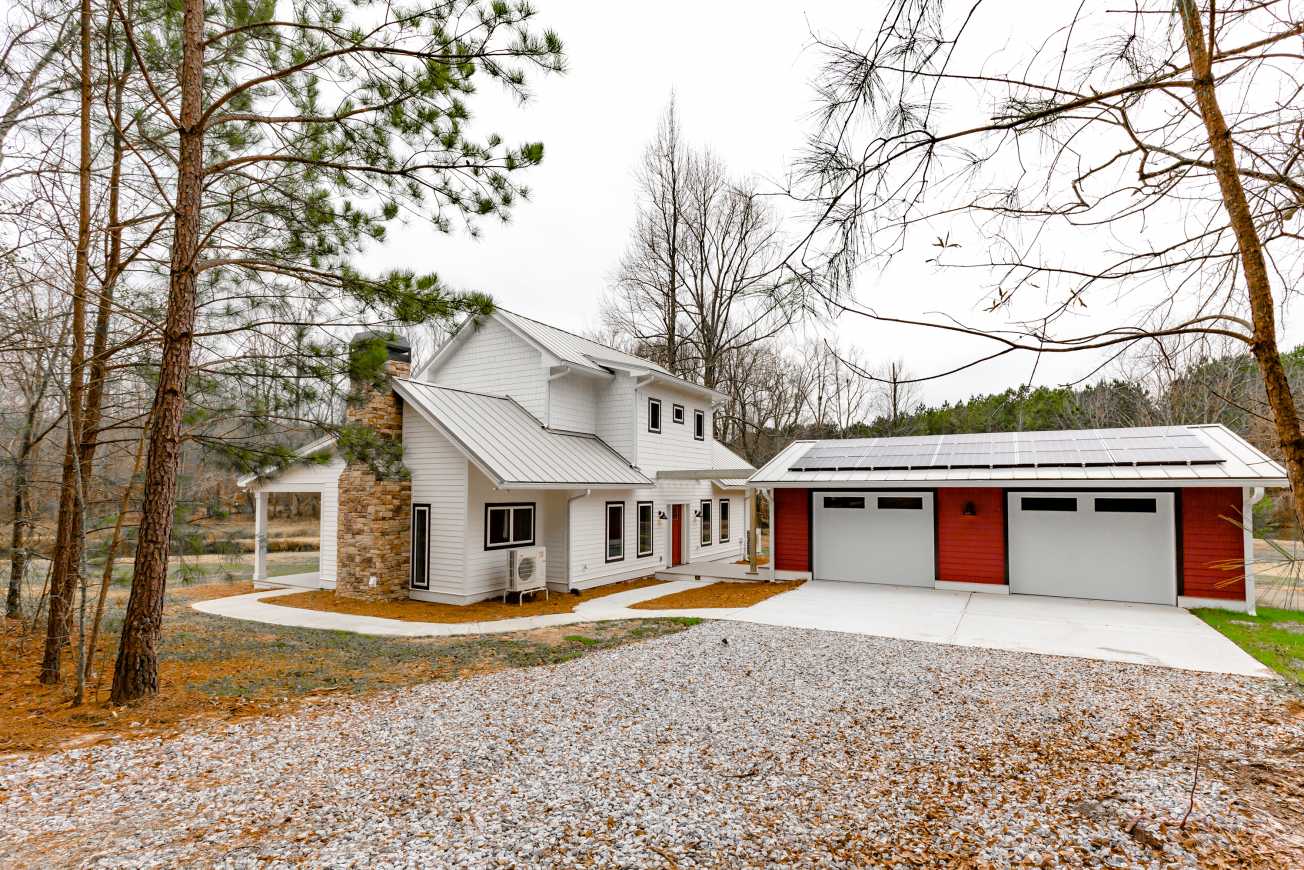
Una bomba de calor es un sistema de enfriamiento y calefacción de bajo consumo que se instala fuera de su vivienda y se conecta a una unidad minisplit interior. These HVAC systems cycle hot and cold air where you want it depending on the season and provide personalized comfort throughout your home year-round.
Las generaciones anteriores de estos sistemas, que alcanzaron gran popularidad en la década de 1970, se consideraban más que nada para climas más suaves. Las bombas de calor modernas, especialmente las minisplit de velocidad variable, son confiables y sostenibles, y proporcionan calefacción y aire acondicionado de alto rendimiento a las viviendas, dondequiera que se instalen, incluso en climas muy fríos. El sistema consta de un climatizador de aire interior, que puede ser con o sin conductos, y una unidad condensadora exterior.
HOW DOES A HEAT PUMP WORK?
Para proporcionar calor, la bomba de calor exterior absorbe la energía térmica del aire exterior y la transfiere a la unidad interior a través del refrigerante. El refrigerante se comprime y aumenta considerablemente su temperatura cuando llega al serpentín interior. Un ventilador sopla aire sobre el serpentín calentado para suministrar aire caliente a la estancia. Este proceso de calentamiento es mucho más limpio y mejor para el planeta que la quema de combustibles fósiles, ya que no tiene emisiones.
With air conditioning, the process is reversed; the indoor evaporator unit absorbs and sends the room’s heat energy to the outdoor unit compressor. El vapor se condensa de nuevo en un líquido frío que se enfría y vuelve al serpentín de la unidad interior. El ventilador sopla a través del serpentín frío para proporcionar aire fresco.
HEAT PUMPS VS CONVENTIONAL FURNACES OR AC UNITS
Heat pumps and conventional furnaces or air conditioning units are both used for heating and cooling homes and buildings, but they have some key differences. Heat pumps use electricity, while furnaces and AC units are powered by the burning of fossil fuels, which contribute to toxic fumes in the space. Conventional systems are centralized, and only have a single point of filtration for the entire home. Heat pumps offer continuous air circulation and advanced filtration, and can be placed in multiple rooms in a home.
TYPES OF HEAT PUMP SYSTEMS
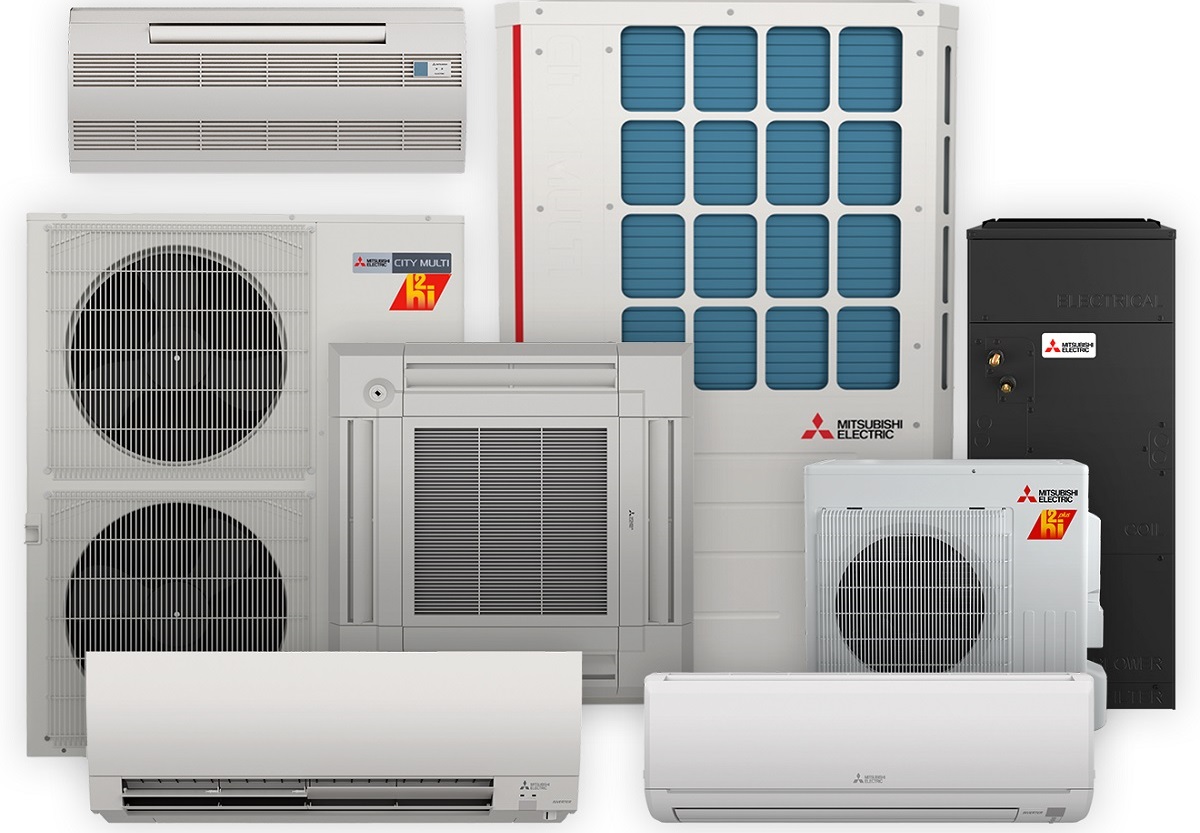
There are several different types of heat pumps, each with its own unique features and capabilities. The three most common types of heat pump systems are air-source, water source, and geothermal.
AIR-SOURCE HEAT PUMPS
Air-source heat pumps work by extracting heat from the air outside and transferring it indoors during the winter months to heat a home or building and reverses the process during the summer months to cool a home or building.
Air-source heat pumps can be ducted or ductless. Ductless systems transfer heat via a refrigerant line, while ducted systems use a home’s existing ductwork to move heat throughout the space.
Mitsubishi Electric Trane heat pumps can be single-zone or multi-zone. Single-zone systems are designed to control the temperature of a single area or room. On the other hand, multi-zone systems are designed to control the temperature of multiple areas or rooms. This allows for different temperatures to be set in each zone, based on the specific needs of each area. Each zone has its own thermostat, which allows for independent temperature control and greater flexibility in managing comfort levels throughout the home or building.
BOMBAS DE CALOR ENFRIADAS POR AGUA
Water source heat pumps use a nearby body of water to heat in when heating mode and as a heat sink when in cooling mode.
They can extract heat from water even if the water temperature is lower than the desired temperature in the home. The two primary types of water source heat pumps are closed loop and open loop systems. Closed loop systems are used with lakes and large ponds by submerging sealed pipes with anti-freeze into the water, and those pipes then circulate the heat it gathers back to the heat pump. Rather than using sealed pipes and anti-freeze, open loop systems take water from the source, extract heat energy, and then return the cooled water back to the source.
GEOTHERMAL (GROUND SOURCE) HEAT PUMPS
Geothermal heat pumps (also known as ground source heat pumps) use the ground as the source of heat in heating mode and as a heat sink in the cooling mode.
Closed loop systems circulate anti-freeze or refrigerant through pipes or tubing that is buried in the ground. A heat exchanger transfers heat between refrigerant in the heat pump and the antifreeze. Open loop systems use water from a well or surface body of water and a heat exchanger to extract heat from the water before returning it to the source.
COMPONENTS OF HEAT PUMP SYSTEMS
Heat pump systems consist of several key components.
Refrigerant is moved through the system’s components, causing phase changes that result in heat that is either brought into the home to warm it, or removed from the home to cool it. These key components consist of the outdoor unit, indoor unit, compressor, condenser, expansion valve, and evaporator.
UNIDAD EXTERIOR
The outdoor unit in a heat pump system is the component located outside the home or building, often on the side of a home or on the roof of a larger building. It is the unit that rejects the heat when the system is air-conditioning and absorbs the heat when the system is in heating mode. It contains the evaporator coil, which absorbs heat from the outside.
UNIDAD INTERIOR
The indoor unit in a heat pump system is the component of the system that is located inside the home or building, in the form of an air handler or wall, floor, or ceiling-mounted ductless units. An indoor system has a fan to move air through ductwork or to push it from a ductless unit. It also contains the condenser coil.
INVERTER DRIVEN
The compressor is the heart of the heat pump system. It pulls low-pressure vapor from the evaporator, then it compresses that vapor into a high temperature, high pressure gas so that it may be condensed in the condenser.
CONDENSER
The condenser is the coil that is located in the indoor unit, which releases or absorbs heat. It condenses by allowing air to be pulled across the coil, which removes the heat from the vapor and returns it to a liquid state. The more air that is passed across the coil, the more the vapor and the liquid is cooled. The liquid is then transferred to the expansion valve.
EXPANSION VALVE
The expansion valve controls the refrigerant through the system. This valve sets up the high and low pressure split in the system. The difference in pressures is what allows for the change in state of the refrigerant. Different pressures allow for different boiling points, or changes in state. As the cooled liquid comes over from the condenser it is cooled further, and then moves on to the evaporator.
EVAPORATOR
Located in the outdoor unit, the evaporator is responsible for absorbing heat and making the air condensate to remove the moisture in a process called dehumidification. The evaporator changes the state of refrigerant and adds superheat. Adding superheat to the refrigerant is what keeps it in the desired state, which a vapor. Because the compressor is a vapor pump, it can only function if it has vapor coming through it.
HEAT PUMP REBATES AND TAX CREDITS
Heat pump rebates and tax credits are financial incentives offered by the government or utility companies to encourage the use of heat pump systems, which are considered more energy-efficient than traditional heating and cooling systems.
Las compañías eléctricas también reconocen el impacto medioambiental positivo de elegir un sistema de bomba de calor totalmente eléctrico. Están dispuestas a recompensar a los propietarios de casas que decidan dejar de usar combustibles fósiles. Use nuestro buscador de reembolsos para obtener reembolsos e incentivos para su sistema de bomba de calor.



